Abstract
This study evaluated the effectiveness of glycopyrrolate (0.005 or 0.01 mg/kg body weight (BW)) in anesthetized dogs (n = 40) for reversal of bradycardia (< 65 beats/min). Following random intravenous (i.v.) treatment, heart rate was determined at 5 min and, if it was < or = 70 beats/min, the lower dose was repeated. A 2-way analysis of variance considered dose and animal size (< or = 10 kg, > 10 kg) effects (P < 0.05). Glycopyrrolate produced a significant increase in heart rate and infrequent tachycardia (< or = 150 beats/min), which was not dose-related. The size of the dog produced a significant effect on baseline heart rate (higher in small), rate following the first dose (lower in small), and requirement for retreatment (47% in small, 13% in large). In a separate group of anesthetized dogs (n = 20), the blood pressure effect of glycopyrrolate (0.01 mg/kg BW, i.v.) treatment of bradycardia (65-85 beats/min, weight-adjusted) was studied. A significant increase in systolic, diastolic, and mean blood pressure was produced. In conclusion, the effective dose of glycopyrrolate treatment is size-related and produces a beneficial effect on blood pressure.
Full text
PDF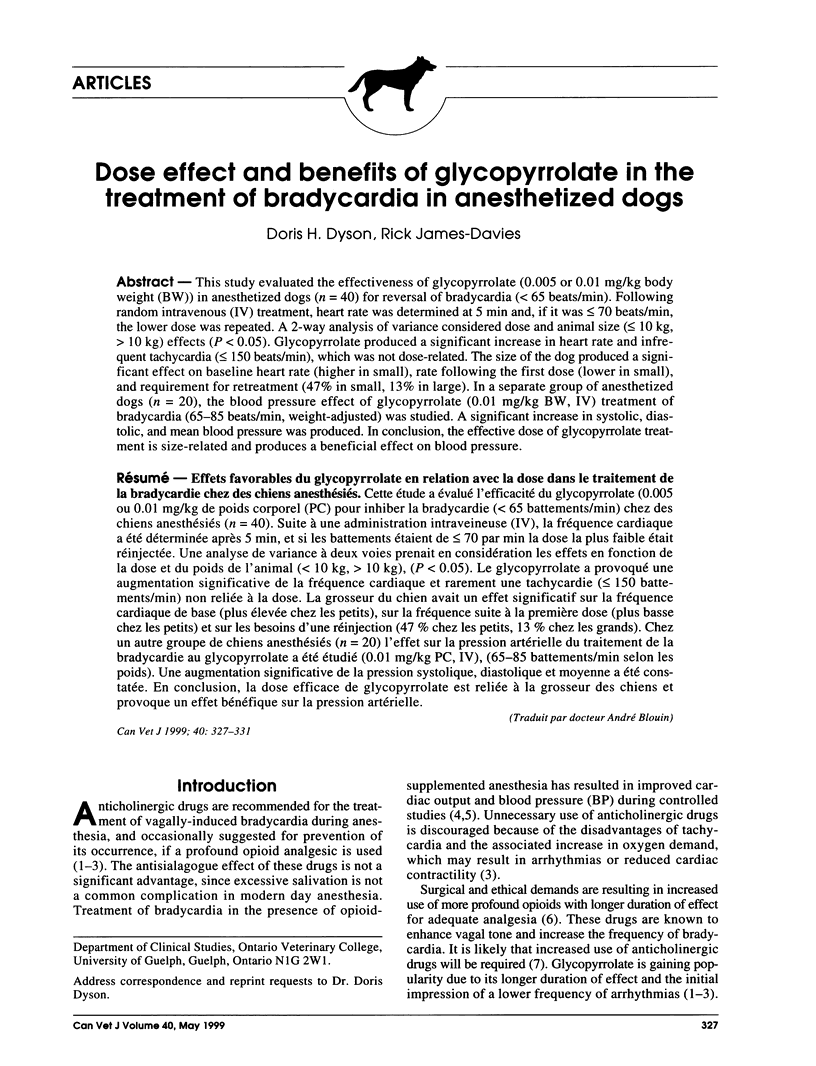
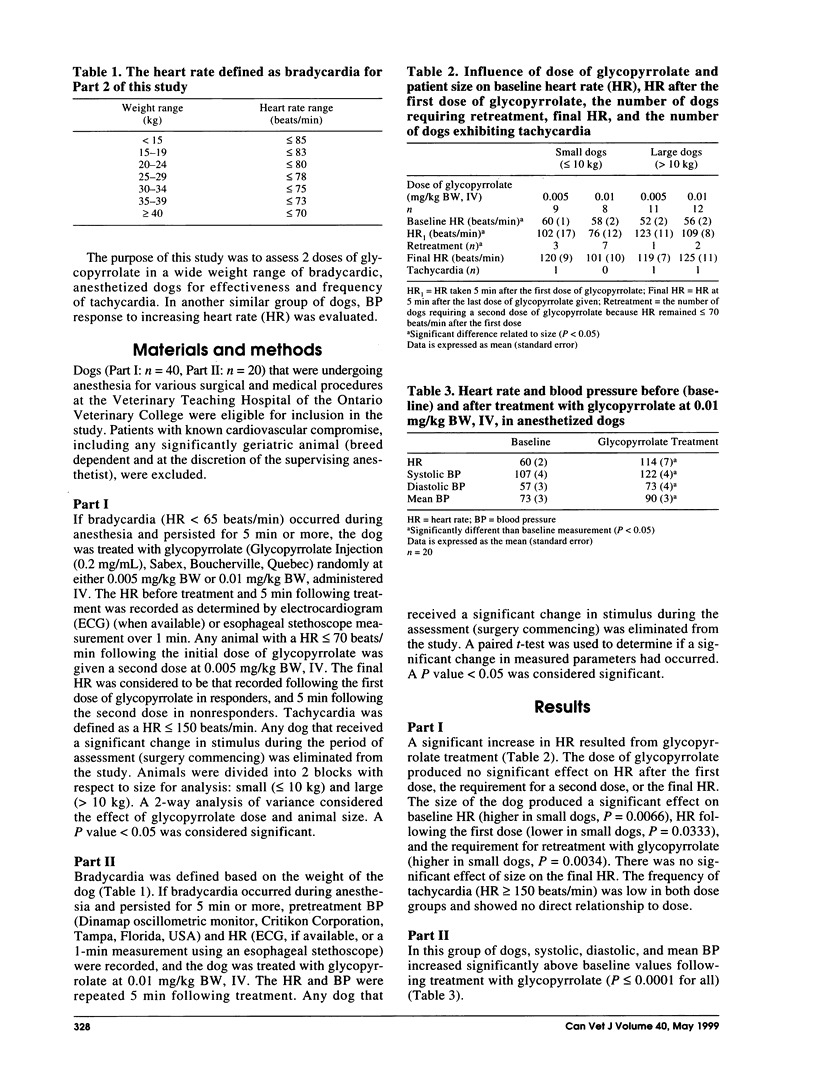
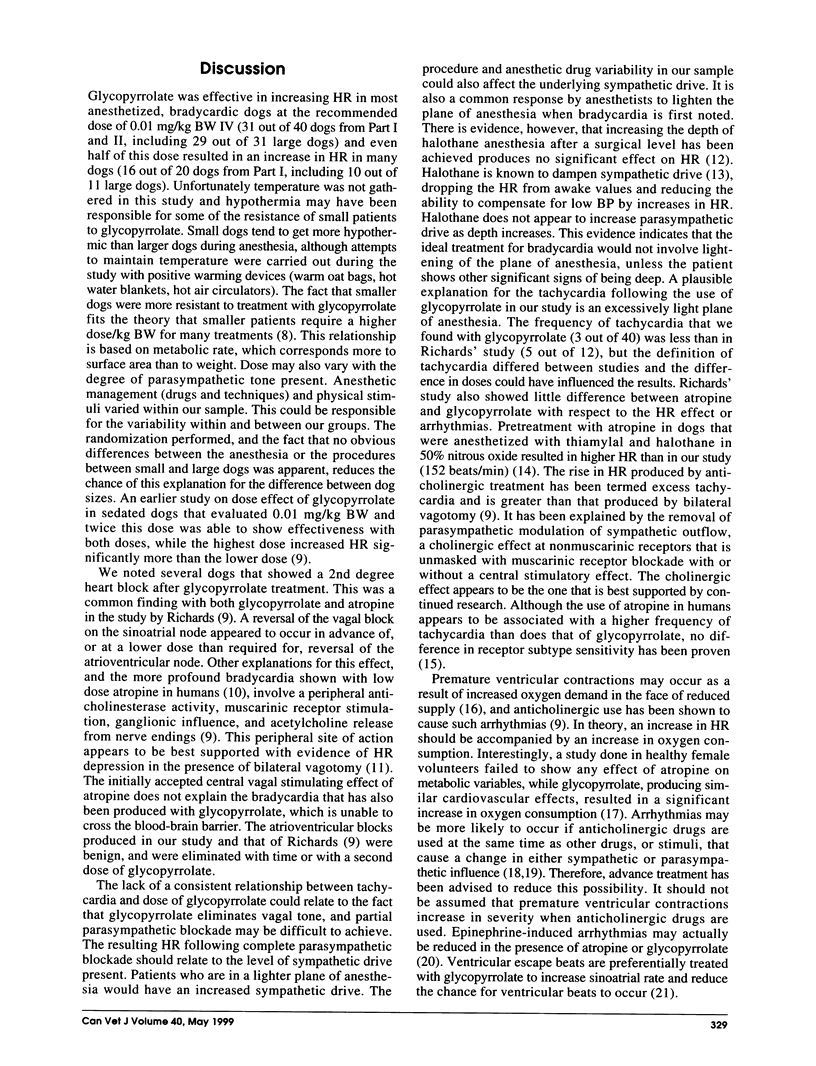
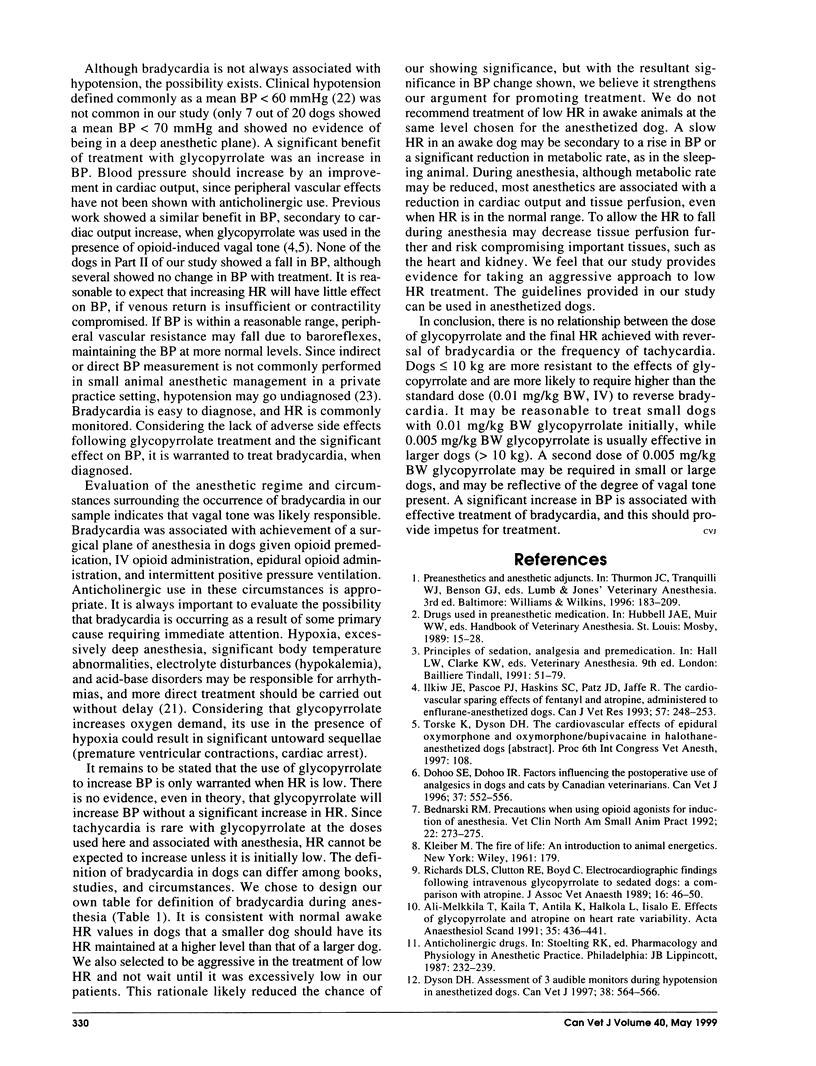
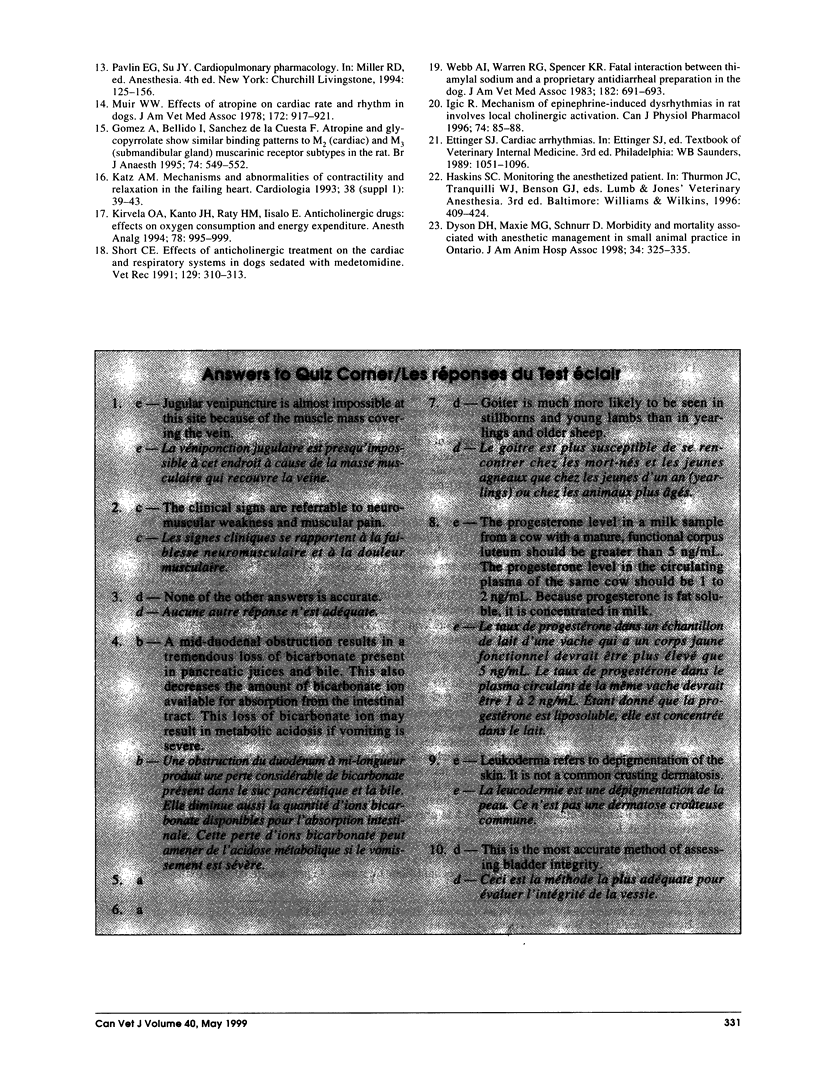
Selected References
These references are in PubMed. This may not be the complete list of references from this article.
- Ali-Melkkilä T., Kaila T., Antila K., Halkola L., Iisalo E. Effects of glycopyrrolate and atropine on heart rate variability. Acta Anaesthesiol Scand. 1991 Jul;35(5):436–441. doi: 10.1111/j.1399-6576.1991.tb03324.x. [DOI] [PubMed] [Google Scholar]
- Bednarski R. M. Precautions when using opioid agonists for induction of anesthesia. Vet Clin North Am Small Anim Pract. 1992 Mar;22(2):273–275. doi: 10.1016/s0195-5616(92)50607-6. [DOI] [PubMed] [Google Scholar]
- Dohoo S. E., Dohoo I. R. Factors influencing the postoperative use of analgesics in dogs and cats by Canadian veterinarians. Can Vet J. 1996 Sep;37(9):552–556. [PMC free article] [PubMed] [Google Scholar]
- Dyson D. H. Assessment of 3 audible monitors during hypotension in anesthetized dogs. Can Vet J. 1997 Sep;38(9):564–566. [PMC free article] [PubMed] [Google Scholar]
- Dyson D. H., Maxie M. G., Schnurr D. Morbidity and mortality associated with anesthetic management in small animal veterinary practice in Ontario. J Am Anim Hosp Assoc. 1998 Jul-Aug;34(4):325–335. doi: 10.5326/15473317-34-4-325. [DOI] [PubMed] [Google Scholar]
- Gomez A., Bellido I., Sanchez de la Cuesta F. Atropine and glycopyrronium show similar binding patterns to M2 (cardiac) and M3 (submandibular gland) muscarinic receptor subtypes in the rat. Br J Anaesth. 1995 May;74(5):549–552. doi: 10.1093/bja/74.5.549. [DOI] [PubMed] [Google Scholar]
- Igić R. Mechanism of epinephrine-induced dysrhythmias in rat involves local cholinergic activation. Can J Physiol Pharmacol. 1996 Jan;74(1):85–88. [PubMed] [Google Scholar]
- Katz A. M. Mechanisms and abnormalities of contractility and relaxation in the failing heart. Cardiologia. 1993 Dec;38(12 Suppl 1):39–43. [PubMed] [Google Scholar]
- Kirvelä O. A., Kanto J. H., Räty H. M., Iisalo E. Anticholinergic drugs: effects on oxygen consumption and energy expenditure. Anesth Analg. 1994 May;78(5):995–999. [PubMed] [Google Scholar]
- Muir W. W. Effects of atropine on cardiac rate and rhythm in dogs. J Am Vet Med Assoc. 1978 Apr 15;172(8):917–921. [PubMed] [Google Scholar]
- Short C. E. Effects of anticholinergic treatment on the cardiac and respiratory systems in dogs sedated with medetomidine. Vet Rec. 1991 Oct 5;129(14):310–313. doi: 10.1136/vr.129.14.310. [DOI] [PubMed] [Google Scholar]
- Webb A. I., Warren R. G., Spencer K. R. Fatal interaction between thiamylal sodium and a proprietary antidiarrheal preparation in the dog. J Am Vet Med Assoc. 1983 Apr 1;182(7):691–693. [PubMed] [Google Scholar]


